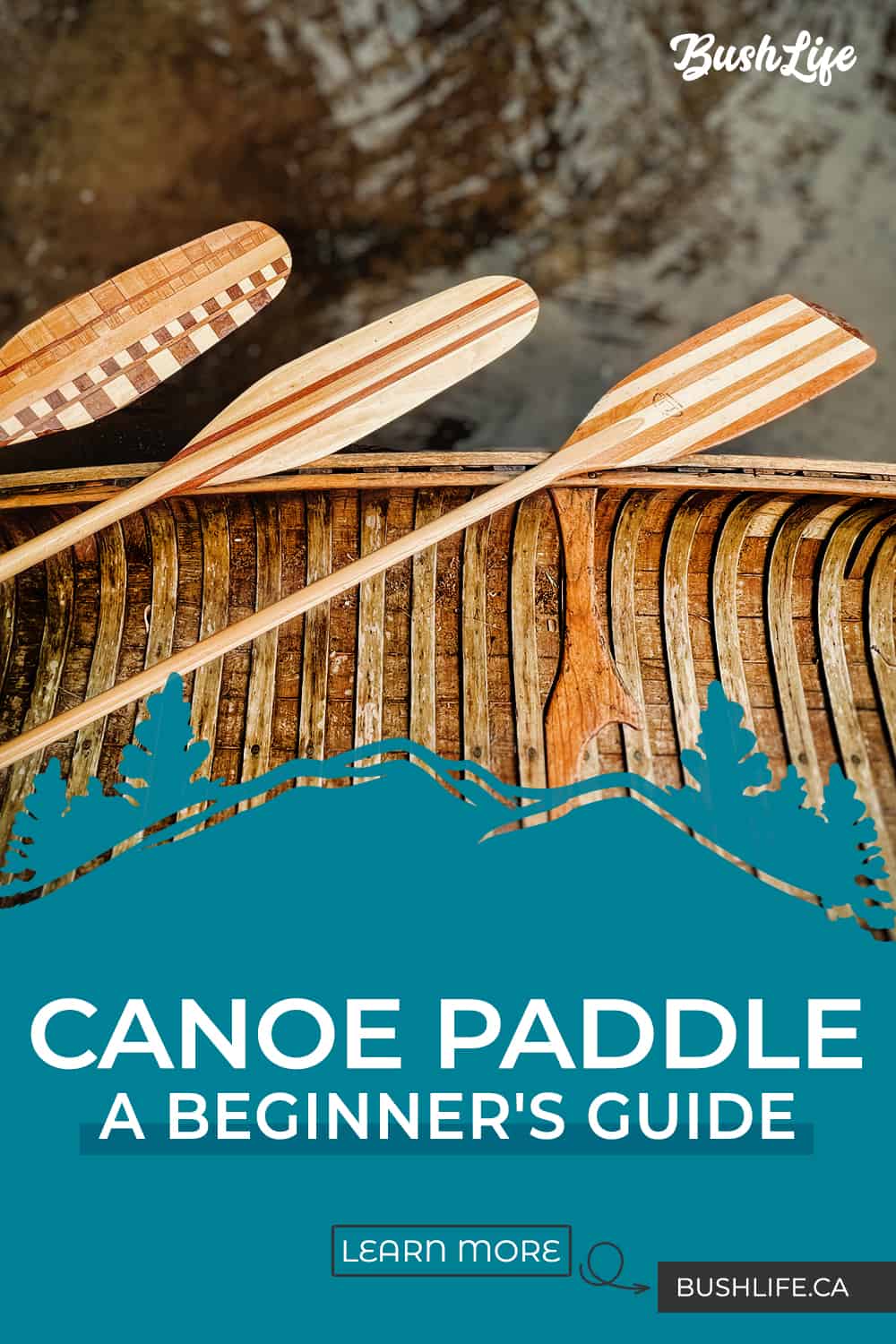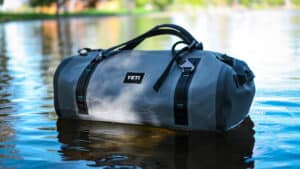Canoeing is such a rewarding experience. It allows you to access little nooks and witness a different perspective that you wouldn’t be able to by land. Here’s the thing – paddling can get very tiresome without the correct paddle and make a rewarding adventure into a miserable experience. So, let’s take your canoeing experience to the next level by determining the correct canoe paddle sizing for you.
In this beginner’s canoe paddle guide, we will scrutinize the key factors to ponder when sizing for your perfect paddle. From paddle length and weight to blade material and grip, we will take you through the essential aspects step-by-step. By the end of this guide, you will understand what to look for in a canoe paddle. As well as how to test and adjust to find the right fit. Let’s dive in and get you paddling with confidence!
Discloure: Posts may contain affiliate links. Purchases made through our links result in a small commission to us at no charge to you. We only recommend products that meet our brand standards based on testing and first hand use by our authors.
How to Size for the Right Paddle Length
When considering the length of your canoe paddle, it is paramount to find one that matches your height, the nature of paddling, and the width of your canoe. A canoe paddle that is too long or too short can lead to discomfort and fatigue. Which ultimately impacts your performance on the water.
Sizing a Canoe Paddle by Height

To determine the correct canoe paddle length, start by sitting inside the canoe and measuring the distance from your nose to the waterline. For those who do not have access to a canoe yet, your local outfitter can take a canoe paddle measurement.
A secondary method is to:
- Kneel with your bottom 6 inches off the floor.
- Take a canoe paddle and place the paddle grip on the floor. The paddle throat (where the shaft meets the blade) should be between your nose and chin.
Canoe Paddle Length Guide
- Standard canoe paddle length is between 52″ to 60″.
- Bent shaft canoe paddle sizing starts between 48″ and 54″. Once you have determined your fit from the above methods, deduct 2 inches from your measurement. This should be your ideal fit for a bent-shaft canoe paddle.
A longer canoe paddle is optimal for those who plan on covering more distance and those who will be paddling in larger bodies of water. A shorter canoe paddle is ideal for those planning on maneuvering in smaller bodies of water.
In addition to your height and style of paddling, consider the width of your canoe. A wider canoe requires a longer paddle, while a narrower canoe requires a shorter paddle. A good rule of thumb is to add two inches to the length of your paddle for wider canoes or if paddling from the stern.
Don’t forget that choosing the right paddle length will enhance your comfort and performance on the water, enabling you to enjoy nature’s beauty without discomfort and fatigue.
RELATED: Introduction to Canoeing: A Guide for the New Canoeist
Canoe Paddle Weight and Material
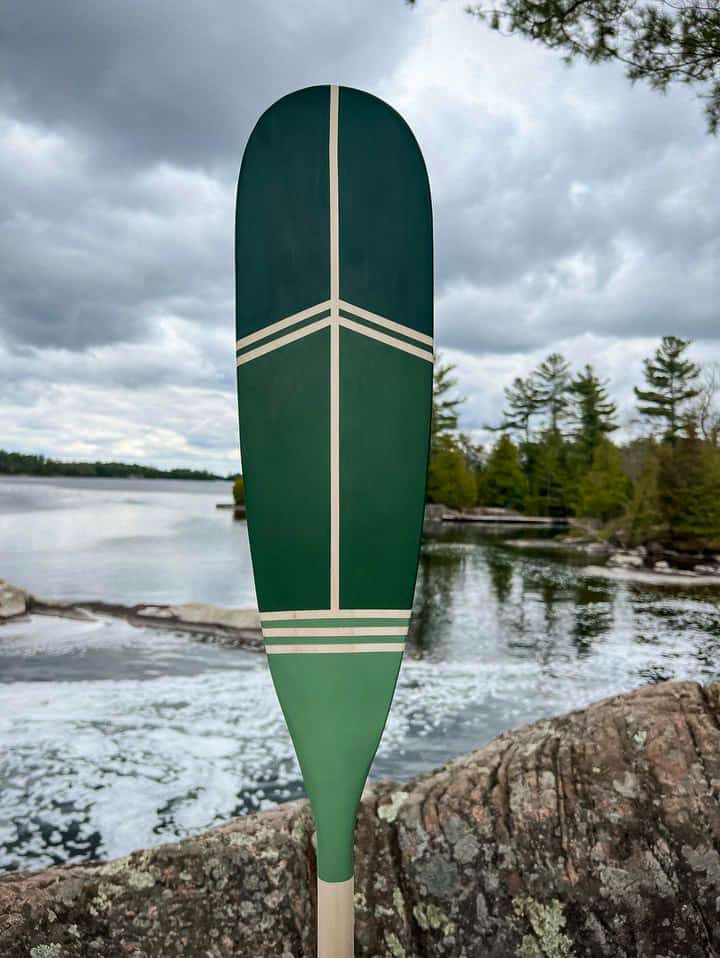
The Stoney Paddle: Hand-Painted, Canadian-Made Paddle by Paddle Ron
Material and weight are two factors to consider when selecting the perfect paddle. The heavier the paddle, the harder your arms will require to work, leading to fatigue and decreased performance. On the other hand, a too-light paddle may not provide enough power and control in the water.
In terms of material, the most common are wood, aluminum, fibreglass and carbon fibre. Let’s review each type of canoe paddle to see what type will suit you best.
Wooden Canoe Paddles
There is something nostalgic about a wooden paddle that compliments a canoe. Many canoeists prefer wooden paddles over aluminum, fibreglass or carbon fibre. Wooden paddles have so much character, especially when combined with different woods. Some upkeep is required to maintain the characteristics of the paddle. They are also relatively inexpensive and easy to repair. However, they can be heavy and not as durable as other materials.
Aluminum Canoe Paddles
Paddles made from aluminum are light, durable and affordable. Unfortunately, it comes at a cost, and that cost is comfort on longer trips. They are also very rigid.
Fibreglass Canoe Paddles
Fibreglass paddles are more expensive but offer a good balance of weight and durability. They are also available in various colours and designs to suit your style. Carbon fibre paddles are the lightest and most expensive option. Serious paddlers who value high performance and speed opt for fibreglass. However, they can be brittle and require extra care when handling. Paddleboarders and whitewater canoeists usually use the fibreglass paddle.
The right paddle weight and material ultimately depend on your preference, physical ability, and budget. Consider testing out different weights and materials before making a final decision.
Canoe Paddle Blade Shape
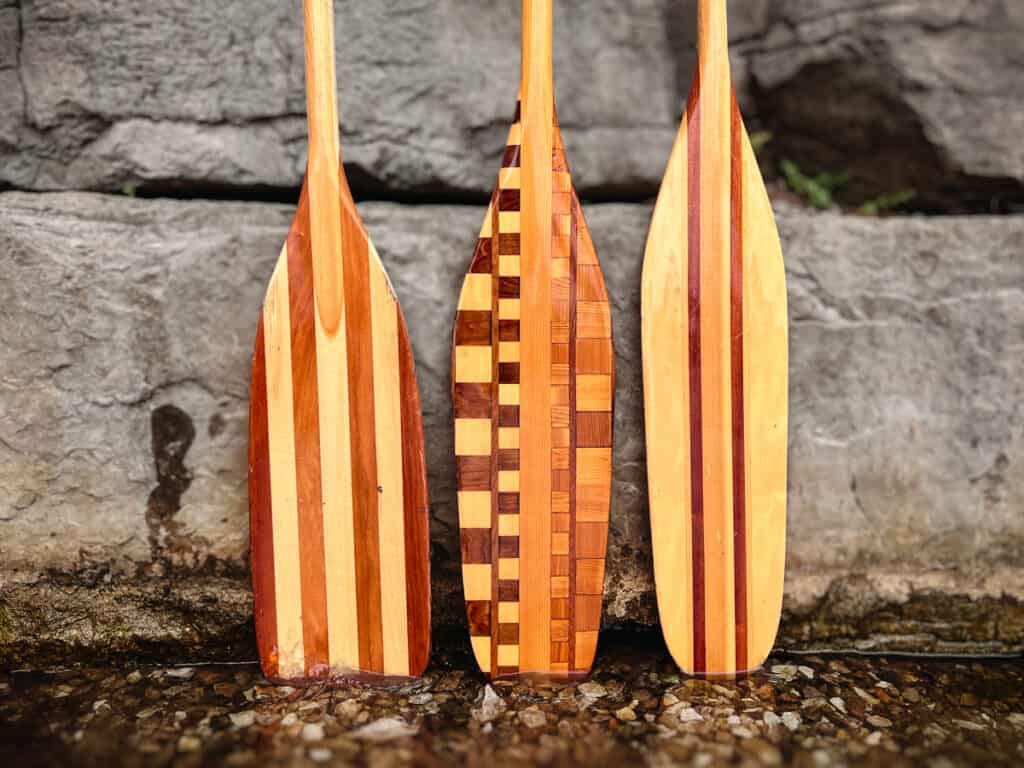
In this next section, we will work through dissecting the parts of a canoe paddle, starting with the paddle blade shape. The blade is the widest part of the paddle, the piece that goes into the water.
Choosing the correct blade shape for your canoeing needs can be complex, but you can simplify the decision by considering the type of water you paddle.
Traditional Otter tail canoe paddles offer leverage for smooth strokes and greater control. This long skinny blade design is ideal for lakes and calmer waters. The Beavertail canoe paddle is shorter and wider than the otter tail, making it an optimal paddle for rivers and shallower waters. The Beavertail paddle requires less effort and provides lightning-fast strokes.
As a side note, traditional names like beavertail and otter tail can be confusing. Each manufacturer (or anywhere you look) seems to have a different take on what a beavertail or an Otter tail paddle looks like. There are also variations on these shapes. So let us look at it as large (wide blade) vs narrow and what the differences are.
Larger canoe paddle blades have their advantages. They are efficient and provide optimal paddling leverage. Every stroke is more effective than with a narrower paddle blade. You can also accelerate faster and manoeuvre quickly, with plenty of bite for rolls and braces – where you lay the paddle blade horizontally on the surface to bring the canoe upright.
The downside is that they can be tiring over long periods and tricky to control in windy situations.
On the other hand, smaller paddle blades (long and narrow) are easy on your muscles and joints and provide less surface area to be pushed around by the wind. The downside is that you’ll need a faster cadence to maintain cruising speed, and making quick manoeuvres can be more difficult.
Canoe Paddle Blade Sizes
Today, paddle blades are often wider and shorter, with an average blade size of 20″ long and 8 ½” wide, which offers greater versatility across various aquatic environments. Larger paddle blades also provide better stability when executing braces. Lastly, rounded corners and an arced or radiused tip allow a quieter entry and exit from the water.
RELATED: Transporting a Canoe, the Right Way
Grip and Shaft Type
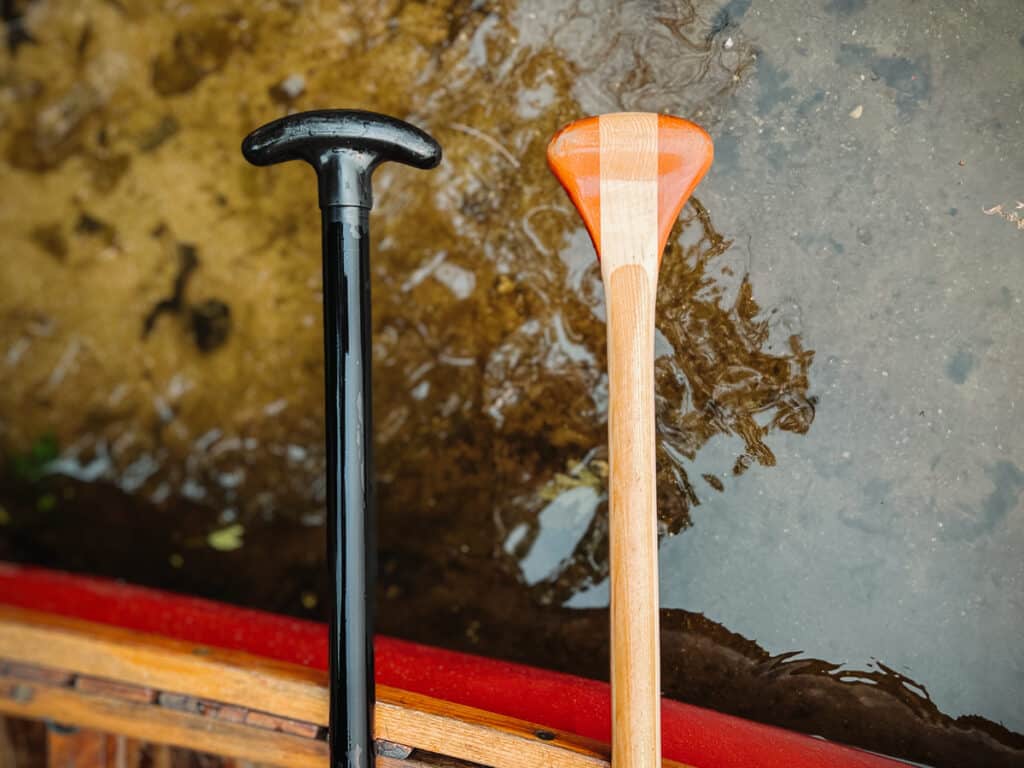
The grip is the top part of the paddle, whereas the shaft is the stick of the paddle between the grip and blade. Your canoe paddle grip and shaft type are just as essential as your blade shape when choosing the right canoe paddle.
A comfortable grip can reduce hand fatigue and increase control, while the right shaft type can provide the necessary flex and stiffness for efficient paddling.
The two most common paddle grips for paddlers are the T-grip and the palm grip.
T-Grip Canoe Paddle
The T-grip canoe paddle, preferred by whitewater paddlers, is a secure design that lets you wrap your fingers around the handle, thus allowing the paddler to know the exact blade position when executing different strokes. It also has a flat top and bottom for a defined shape, giving you the leverage to navigate challenging rapids.
Palm Grip
The palm grip canoe paddle is preferential for paddlers on diverse waters. This type of grip is more ergonomic and often has extra thickness added to the front and back to better fit the contours of your hand. Plus, it has enough shape to give you a firm grip but allows you to hold it loosely when desired.
When choosing a grip, ensure the grip is aligned with the blade and that the paddle is smooth and free from bumps, as these can lead to blisters. As you use your canoe paddle, you will notice that rough spots begin to form. To prolong the lifespan of your wooden paddle, try to sand down these rough spots, as leaving them unaddressed won’t be a pleasant experience.
Discovering Shaft Types
The shaft type can also affect your performance on the water. A straight-shaft canoe paddle is excellent for beginners or those who prefer a classic feel.
A bent-shaft canoe paddle, on the other hand, can provide a more ergonomic feel and reduce wrist fatigue during long paddles.
A round paddle shaft tends to rotate in your grip when paddling hard. Some paddlers opt for an oval paddle shaft, which leads to less rotation, blisters and hand fatigue, making it easier to control.
Now that you understand how your blade shape, grip, and shaft type can affect your paddling experience, it’s time to test a canoe paddle to find that perfect fit.
Canoe Paddle Sizing Guide Conclusion
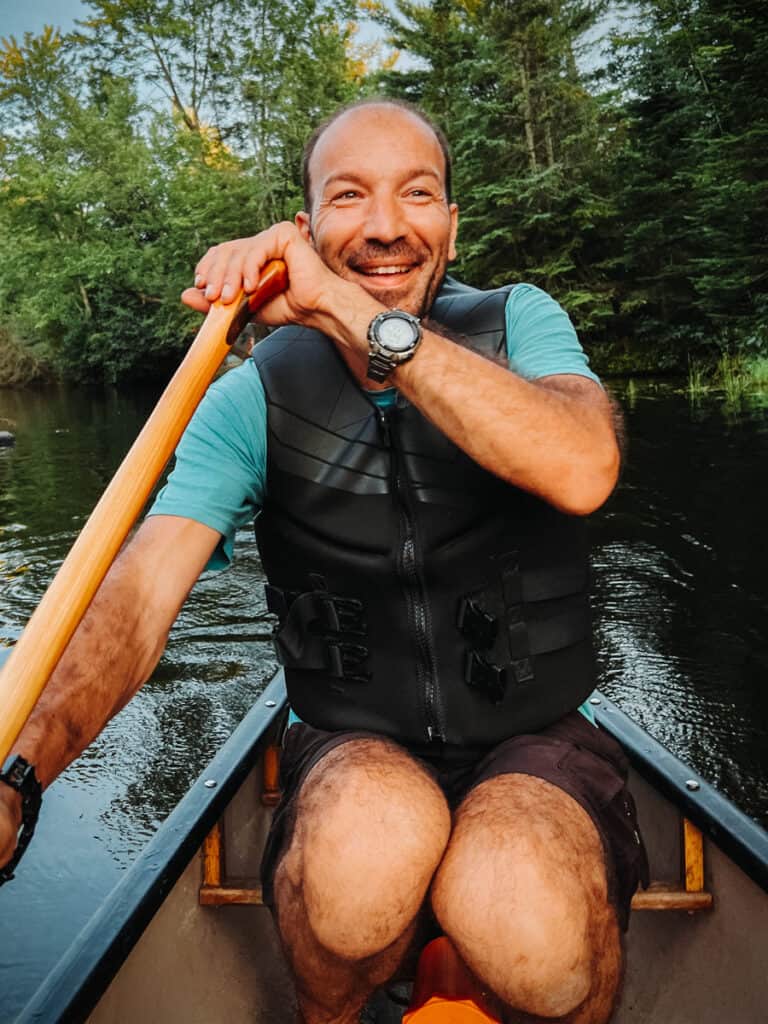
In conclusion, choosing the correct canoe paddle is crucial for a comfortable and enjoyable paddling experience. By considering your height, paddling style, and the canoe’s width, you can determine the correct paddle length for you. In addition, selecting the right weight and material can also impact your overall performance on the water. Lastly, the blade shape plays a vital role in your canoeing needs. By taking all of these factors into account, you can find the perfect paddle for your unique requirements and take your canoeing experience to the next level. Remember, a well-suited paddle can transform an ordinary trip into an extraordinary adventure. So, go ahead, test out different paddles, and enjoy the tranquillity of nature with comfort and ease! Until next time, happy paddling!
Comment down below if you have a favourite canoe paddle.
If you found this post helpful, please consider sharing. Thank you!
Bookmark this post on Pinterest for future reference!
